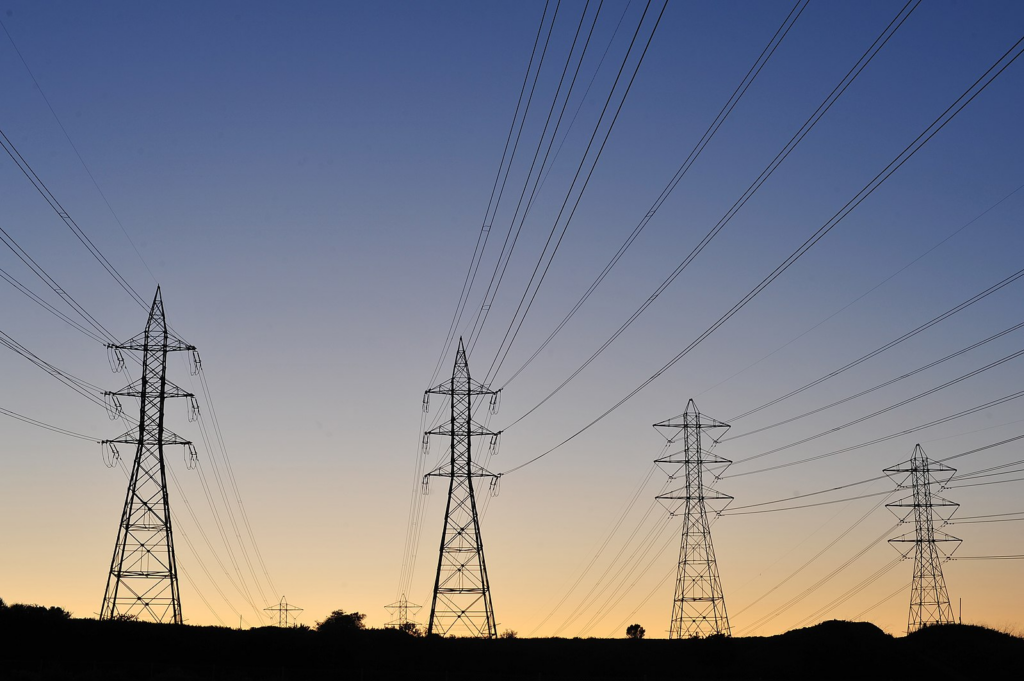Grid Experts Weigh in on EPA’s Good Neighbor Plan for NOx
UCLA Emmett Institute faculty submit amicus brief in Utah v. EPA, a major ozone case, on behalf of some of the nation’s leading grid experts.

Last year, EPA issued a new federal implementation plan to address interstate pollution from nitrogen oxides under the Clean Air Act’s Good Neighbor Provision. The Good Neighbor Provision is designed to address interstate pollution: those instances where emissions from upwind states impose harms across state lines, effectively shifting the costs of controlling their pollution to downwind states. EPA’s 2023 “Good Neighbor Plan” for nitrogen oxides is currently the object of multiple lawsuits, some challenging the details of EPA’s federal implementation plans, other challenging EPA’s initial decision to reject state implementation plans.
This week, Emmett Institute Executive Director Cara Horowitz, Deputy Director Julia Stein, and I submitted an amicus brief in one such case, Utah v. EPA. The brief was submitted on behalf of four leading grid engineers and analysts, Benjamin Hobbs, Brendan Kirby, Kenneth Lutz, and Susan Tierney, each of whom brings a wealth of expertise in grid reliability to bear.
Meanwhile, the U.S. Supreme Court issued an order today putting the Good Neighbor rule on hold while the case is decided at the lower court. In a 5-4 opinion, the Court expressed skepticism about EPA’s likelihood of prevailing on the merits in defense of the rule (more on that opinion here). The Utah v. EPA case will now proceed with the rule stayed and with the Supreme Court’s views informing the D.C. Circuit’s consideration of the parties’ arguments.
The brief takes on petitioners’ claims that EPA’s new Good Neighbor Plan for nitrogen oxide emissions will jeopardize grid reliability by forcing “disorderly retirement” of coal-fired power plants. The brief clarifies how EPA’s rule fits into the longstanding decline of coal generation, the process for the retirement of generating units, and the tools being used to address reliability as the grid increasingly draws on renewable generation sources.
The brief explains:
First, independently of the Plan, the grid is already transforming and shifting away from coal-powered generation—and grid operators and regulators are already successfully deploying a suite of tools and resources that ensure the reliability of the grid as this transition occurs. No evidence in the record, or that we otherwise know of, suggests that the Plan will push the grid or grid operators beyond their ability to adapt to such changes and maintain reliable service.
Second, the decline in coal generation that Petitioners place at the center of their reliability arguments (and erroneously attribute to the Plan) is not, in fact, the principal driver of reliability concerns; instead, grid reliability is threatened by a range of stressors and disruptions from extreme weather and aging electricity infrastructure to the changing nature of the aggregate load with increased distributed generation, electrification, and large data centers requiring flexibility that baseload generation is ill-equipped to supply. Meeting many of these conditions requires addressing the energy transition head on, rather than obstructing it. These more significant concerns are not only already being addressed by grid operators, utilities and other reliability organizations, but, to the extent EPA’s rule impacts them at all, it has the potential to alleviate, rather than exacerbate, them.
The electrical grid is designed to provide affordable, reliable power to all energy consumers. Grid reliability requires several core elements: sufficient generation of electricity that can provide the many reliability services needed across time and space; stable and dependable delivery of that electricity through transmission and distribution in the face of possible disturbances; operating tools and systems that ensure the real-time balancing of the whole system so supply continuously matches demand; and flexibility in some portion of demand itself to respond to changing conditions on the grid. Several trends today—economic, technological, environmental, and regulatory—are contributing to a transformation of the grid and a parallel evolution in grid reliability tools. These trends include the longstanding decline in coal generation, the rapid rise of renewable generation and energy storage technologies, the increasing cost-effectiveness of combined cycle natural gas generation compared to coal-fired supply, and the increase in frequency and severity of extreme weather events.
The Plan has not caused these well-established trends; instead, it acts in concert with them. It acknowledges the longstanding and continuing replacement of coal generation with renewable and natural gas generation, the effects of which easily swamp any role of the Plan in altering the nation’s electricity generation mix. Nothing in the Plan will prevent grid operators from using their ordinary tools and methods to ensure the reliable delivery of electricity. Indeed, the record supports EPA’s well-founded conclusion that the Plan poses no material risk to electric system reliability, as grid operators and regulators continue to prioritize resilient distribution and transmission alongside operational reliability and load balancing.
This amicus brief is one of several submitted this week, including one clarifying the underlying economic analysis and another discussing the public health impacts of ozone pollution. The perspective of these grid experts is particularly important in this case and beyond, to promote an informed debate over the evolution in reliability tools and approaches accompanying the energy transition.








Reader Comments